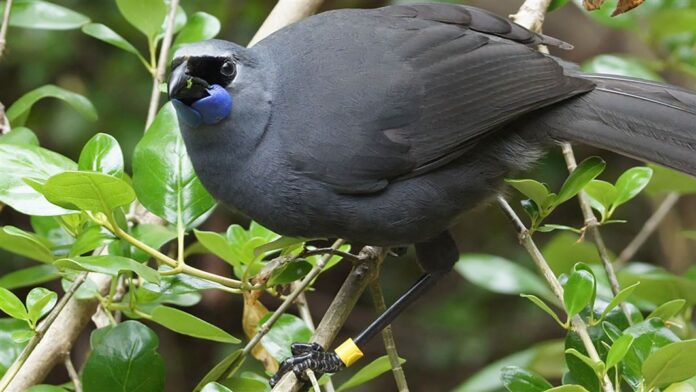Source: Department of Conservation
Date: 22 April 2021
The operation will benefit many native plant, insect and bird species but was primarily focused on protection of North Island kōkako. The operation targeted ship rats and possum which predate heavily on nesting kōkako and their fledglings, in addition to reducing the availability of fruits and seeds available for birds to feed on. The Rotoehu forest is one of a small number of areas where North Island kōkako are found. The South Island kōkako is extinct.
Post operation monitoring has proved the treatment knocked back rat numbers from being detected in 74% of rat tracking tunnels, to being undetected. The residual trap catch for possums decreased from 3.66% to 0.42%.
“Research shows that a rat tracking index and possum residual trap catch above 5% means that kōkako and other susceptible birds will have a poor breeding season, as most eggs and chicks will be eaten by the rats. The pre-operation rat tracking index meant that rats were detected in 74 out of every 100 tunnels – the forest was saturated with rats!” explains DOC Senior Ranger Bex Newland.
“With this level of rat predation, together with possum and mustelid predation, the threatened North Island kōkako population would have suffered a major blow – potentially complete devastation of all nests. We would have suffered a major blow during the breeding season with potentially all nests lost. We know that if kōkako are to have a chance of successfully breeding, rat numbers need to be at 2% or below at the start of the breeding season which lasts from November – May.”
One of New Zealand’s threatened native bird species, only 330 breeding pairs of North Island kōkako were thoughts to exist in the late 1990s.
Thanks to sustained pest control in the few areas where North Island kōkako are the found, North Island kōkako now boast 2000 breading pairs. The increasing number of kōkako in the Rotoehu Ecological area is testament to how DOC working with iwi and community groups who manage the kōkako populations, play a vital role in enhancing the environment.
Rotoehu Forest has sites of significance for Ngāti Mākino, Ngāti Pikiao, Ngāti Awa and Tūwharetoa ki Bay of Plenty. Ngāti Mākino have an active role in supporting the work of DOC in relation to kōkako recovery.
Ground based trapping and bait station control by the volunteers that are part of Rotoehu Ecological Trust is undertaken in the years between 1080 drops, as part of a cycle of pest control. Monitoring shows that rats quickly reinvade forest areas, potentially leading to continued cycles of 1080 use.
The aerial application of the pesticide was completed in October 2020. Post operation water sampling was carried out in the Whakahaupapa Stream. Two samples were taken in the 24-hour period after the drop, sodium fluroacetate (1080) was undetectable in both samples. Bait and carcass monitoring has also been completed and shows that pesticide residues are no longer present in carcasses. Warning signs have now been removed, and normal activities such as hunting can resume.
No accidental by-kill of non-target species was reported.
Background information
Rotoehu Ecological Trust currently manages around 670 hectares of native bush in Rotoehu Forest, located around 30 minutes North East of Rotorua on Rotoehu Road. While Rotoehu Forest comprises of some 3,500 hectares, the Trust manages land in Pongakawa Ecological Area and the newly established Otari Block.
Information on the Trust and how to join the group can be found at kokako.kiwi
Contact
For media enquiries contact:
Email: media@doc.govt.nz



